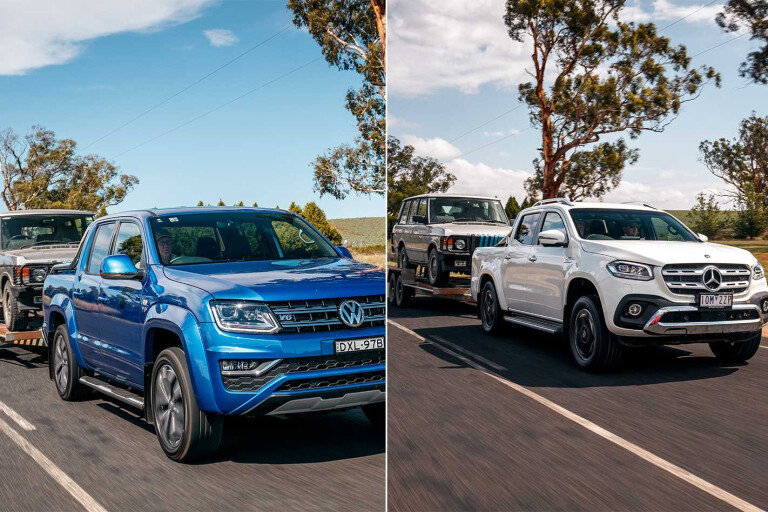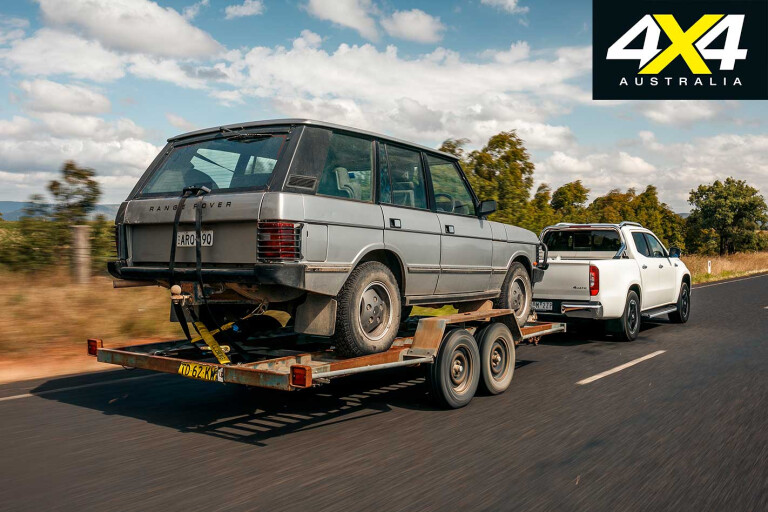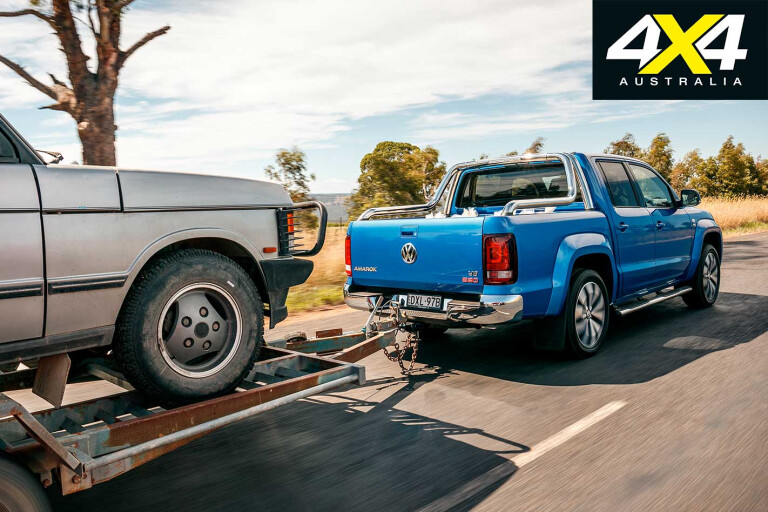
WE RECENTLY lined up six dual-cab utes for our annual tow test, and among the competitors were two V6-powered units relatively new to market: VW’s Amarok 580 and Mercedes-Benz’s X350d.
With similar outputs from their respective 3.0-litre V6 units – 200kW (overboost) /580Nm for the ’Rok; 190kW/550Nm for the X – how do the two German utes cope with an extra 3144kg of weight on and behind them?

For the test we loaded 450kg worth of sandbags in the tubs, and then hooked up a tandem-axle trailer lugging an old Range Rover (another 2500kg).
The vehicles were then comprehensively tested on a variety of road surfaces: steep ascents and descents, hairpin turns and undulating country backroads.
There was little to separate the Amarok and X350d in general highway load a tow duties, with both V6 engines having ample grunt on moderate highway inclines. With the load in its tray the Amarok’s rear suspension dropped around 70mm, and despite operating close to its GCM the 580’s chassis felt stable and competent on the country road course.

The Merc’s chassis, on the other hand, struggled under load right from the get-go, with a noticeable change in the vehicle’s steering and chassis stability. With the load added to the tray, the X’s rear suspension dropped by 80mm. Both powertrains made light work of the extra heft, though.
The steep hill climb separated the two V6 utes further. The X350d performed strongly on the climb, had good engine braking and the automatic transmission performed admirably, but it was no match for the Amarok. The Amarok was comfortably quicker than the X350d to mount the hill, with strong performance from its lower gears.
The comprehensive tow and load test – Amarok V6, X350d, Ranger 2.0, Ranger 3.2, Colorado and D-Max – is in the April 2019 issue of 4X4 Australia, which is in stores now.

COMMENTS